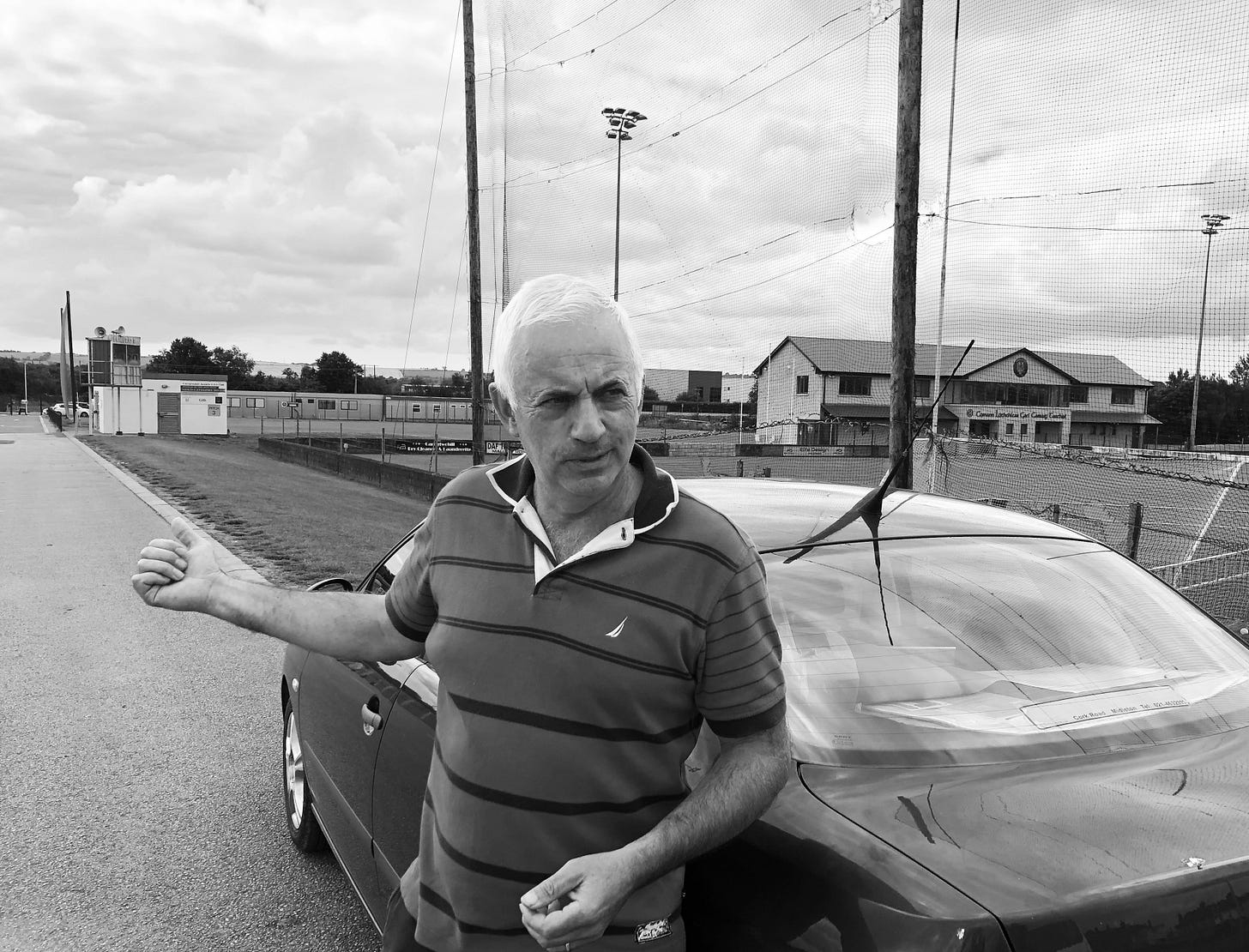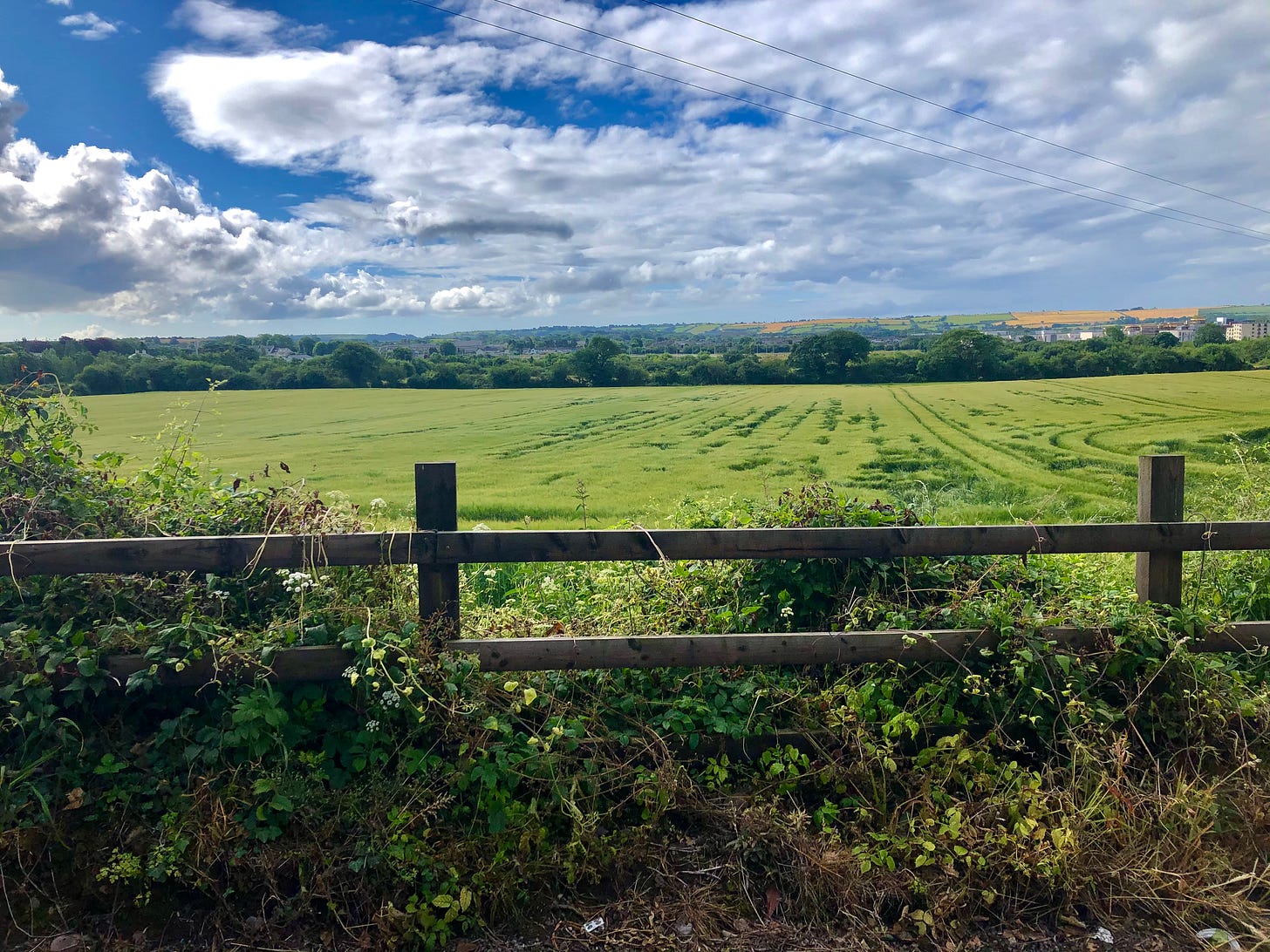Carrigtwohill's future: thriving community or soulless sleeper town?
Earmarked for a population explosion to 10,000 and a corresponding building boom, Carrigtwohill in East Cork is at a crossroads in terms of its development.
It all started with the GAA…
Anthony Barry stands next to his navy sedan at Carrigtwohill GAA club. To his right, a large throng of children are being put through their summer camp paces. He looks over at the pitch where he used to hurl and shakes his head.
“I spent all my time here; I knew every blade of grass,” he says. “That was my school just over there, and you came out and you played. It was just part of your psyche.”
Carrigtwohill’s only councillor at the time of his first election - he has since been joined by Green Party Councillor Alan O’Connor, who was first elected in 2019 - Anthony ran in the local elections for Fine Gael and was first elected in 2014. He had been involved in party politics, and served as East Cork TD David Stanton’s director of elections.
But where we’re standing is in some way a part of this story, too; Anthony farms 42 hectares of suckler beef and tillage outside the village where he grew up, and his involvement in his GAA club and then the local community council led to a keen interest in Carrigtwohill’s future.
The town’s rapid expansion was well underway by the time Anthony ran for office, and yet it had no representation on the council, being subsumed into the larger Cobh hinterland.
“I saw the way the place was growing and we didn’t have anyone from Carrigtwohill on the council,” Anthony says.
Carrigtwohill’s future is currently a large, at times national, topic of conversation.
The Metropolitan Area town, part of Cobh Municipal District, has been earmarked for a population increase to 9,749 under Cork County Development Plan 2022: a near-doubling of the population at Census 2016.
It’s envisaged that 1,784 new housing units will need to be built to accommodate this increase, part of 10,000 planned for the Metropolitan area in the county development plan.
Carrigtwohill’s proximity to Cork city and its position on the Cork to Midleton train line, opened in 2009, make it a natural choice for expansion, Anthony explains to Tripe + Drisheen over coffee.
“Cork city has pretty much grown out the Ballincollig side and Carrigaline side, and the obvious line of growth for Cork now is east: Midleton and Carrigtwohill,” he says. “You have to justify the opening of the railway line too, so there’s going to be development.”
Cork’s Newtown?
Even at present, he tells us, Carrigtwohill’s current population of around 6,000 has outstripped Kanturk, Millstreet and Newmarket combined.
“30 years ago, Carrigtwohill would have had a population of 600 to 800,” he says. Things weren’t always this way: at census 1831, the parish of Carrigtwohill supported an equivalent population, of 6,372.
But despite this, urbanisation is indeed relatively new to Carrigtwohill, which Anthony says was “never a town, never designed as a town. When I was growing up, by fifth and sixth class, no-one would be in class this time of year. Everyone would be picking spuds. And I mean everyone. It was rural.”
The arrival of the IDA (Industrial Development Agency) estate in the seventies and Fota Wildlife Park in the eighties, the construction of the N25 in 1994 all added to the bustle of the place, but much hasn’t changed: Carrigtwohill still sprawls along the roadside, defined by transit, by the N25 roaring behind it, the train line behind the village, and by the main street with the old Cork to Midleton road at its core.
In 1837, when Samuel Lewis published his Topographical Dictionary of Ireland, he described Carrigtwohill in a manner that suggests not much has changed: “it consists principally of one long, irregular street containing ninety eight small houses, indifferently built,” he wrote.
“It’s a shithole of a street,” Anthony says ruefully. He hopes this is about to change: the council is finalising plans for a public consultation for an extensive round of improvements to the public realm to the tune of €20 million, including a facelift of the main street with a focus on active travel, public seating and other upgrades. It’s hoped that national funding will pick up the tab.
“You have to satisfy the Department that the public realm changes comply with their guidelines on cycling, walking, etcetera,” Anthony says.
The scale of the building boom that’s proposed for Carrigtwohill means the future of what will essentially constitute a “Newtown” hinges on the amenities and resources that come with the housing developments, he believes.
There are some promising moves afoot: a vast new school campus is under construction on the edge of town, serviced by a segregated cycle and walkway into the town centre. At the Millennium Park, a state-of-the-art playground is in pretty near constant use by Carrigtwohill’s population of young families and the finishing touches are underway on impressive changing facilities for the adjoining all-weather pitches, which are community-owned.
But Anthony worries. There are many gaps - no library, no arts facilities of any kind, a shortage of GP care - and his worst fear is that Carrigtwohill could become a soulless sleeper town of serried ranks of housing units, devoid of the kind of community spirit that has served the place well to date.
“The worst-case scenario would be that the whole identity of Carrigtwohill gets lost and we end up with – and I hate using the word – the ghettoisation of Carrigtwohill,” he says. “We’ve seen it before, we’ve made these mistakes before. The public realm has to come onstream and we need the facilities, for the young people growing up here and the old people growing old here.”
“If you lose the voluntary effort and community identity, then things will go tits up here very, very quickly.”
“Our approach to planning and place-making has been totally lopsided in this country,” he says. “But the lack of power that local government has is a large part of that.”
And Cork County Council is embroiled in large row about that local authority power as we write.
Carrigtwohill: the numbers
10,000: The target population of Carrigtwohill by 2028 according to the Cork County Development Plan.
100: the percentage increase in Carrigtwohill’s population between 2002 and 2006, when the town doubled, from 1,411 inhabitants to 2,782. By 2016, the population had grown to nearly 5,000. At 10,000, the town would be bigger than Kinsale, Macroom or Fermoy.
1: The number of train stations in Carrigtwohill. The station reopened in 2009 as part of the Cork to Midleton train line which had been out of service for 46 years before a €75 million investment reopened it. Carrigtwohill is set for another train station at Carrigtwohill West, close to the site of the proposed retail outlet centre.
18: the average number of minutes by train from Carrigtwohill to Kent Station in Cork city.
7: average number of minutes by train from Carrigtwohill to Midleton Station.
0: The number of libraries, hospitals, theatres or swimming pools in Carrigtwohill.
8.3km: the length of the cycle and pedestrian path, still under construction, which starts at Bury’s Bridge near Dunkettle and will run through Glounthaune to Carrigtwohill.
€290 million: The total amount Merck, a German life sciences company, plans to spend on the expansion at their base in Carrigtwohill.
100/1: The odds on Carrigtwohill to win the County Hurling Championship in 2011. They won, their first time in nearly 100 years.
41.9: The percentage of Carrigtwohill’s population between the ages of 25-44 according to the 2016 census. This is a much higher figure than the national average of 29.5%.
2,040: The number of houses and apartments in Carrigtwohill according to the most recent data from Cork County Council. The housing stock increased from 739 in 2005 to 1,980 in 2015 and 2,040 in 2020.
89: The percentage of workers commuting to work in Carrigtwohill by car (2016 data). Just under 1% travelled by public transport and 2% travelled by walking or cycling.
National government steps in
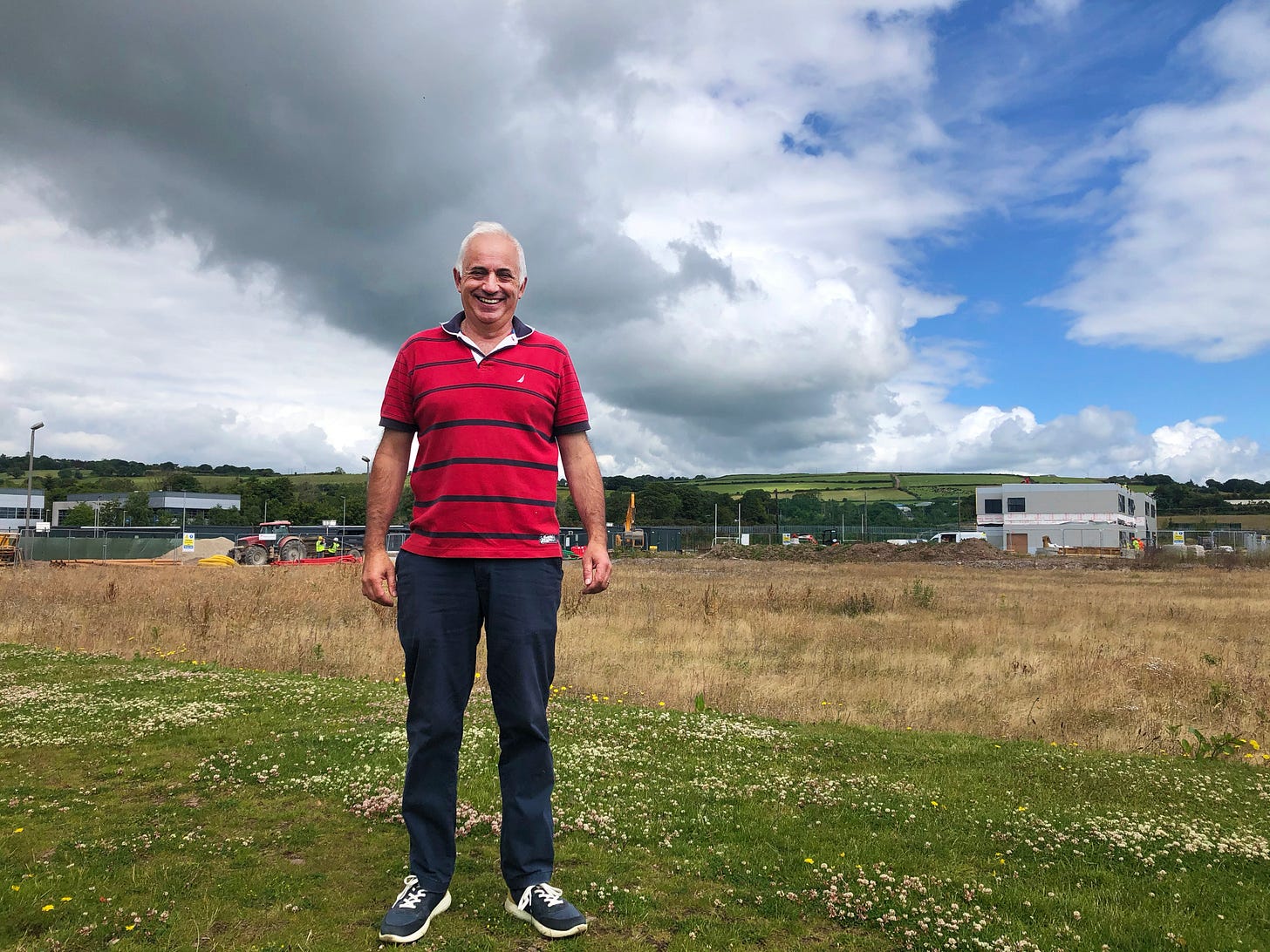
As we reported in June, no sooner was the ink dry on the Cork County Development Plan 2022-2028 than a Ministerial Directive was issued to the county council, with councillors fuming at what they perceived as heavy-handed interference with the workings of local government.
Two of the items the Minister of Housing, with the backing of the Office of the Planning Regulator, wanted changed in the CCDP relate to the controversial retail outlet centre that county councillors want built in Carrigtwohill but which city councillors say will add to the erosion of city vitality: you can read more about the saga of the retail outlet centre in this section:
The retail outlet centre: what’s the story?
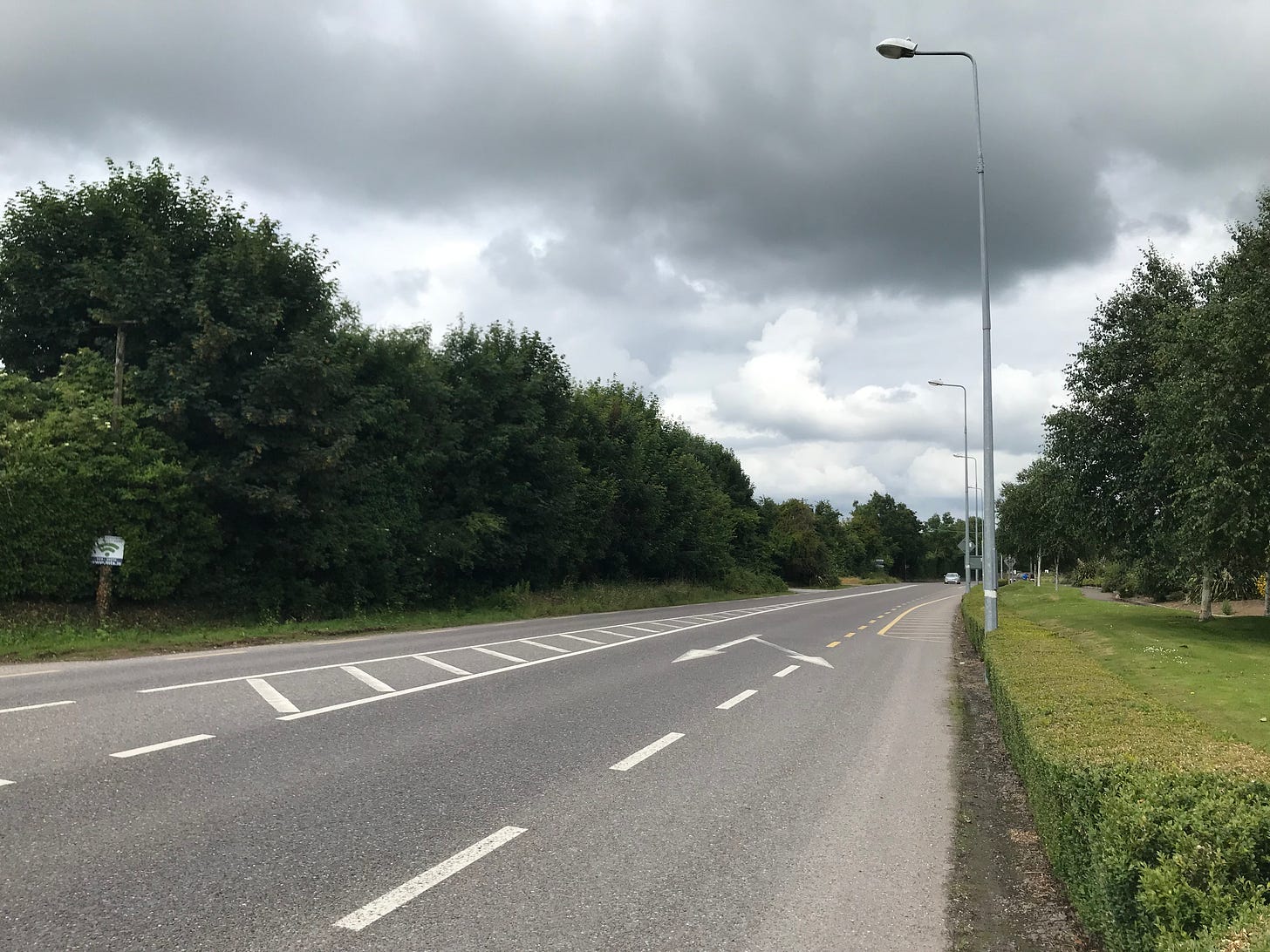
Kildare Village outlet centre opened in 2006 and has expanded several times since. Before Covid-19 it was pulling in over two million visitors a year with its mix of luxury brand name stores. Local authorities across the country have seen it as a model to be replicated in their areas.
Cork County Council had earmarked a site to the west of Carrigwtohill, close to Fota Business Park, for a similar retail venture.
However, almost immediately the County Council’s plans ran into obstacles which broke down roughly along environmental, traffic and competition concerns.
Giles Membrey, the managing director of Rioja Estates, the UK-based property developer pushing to build the outlet centre in Carrigtwohill, told the Irish Examiner in 2019 that his research showed “that there is room for one more Tourist Outlet Village in Ireland.” And that would be on a green field site abutting the N25, to the west of Carrigtwohill.
41 submissions were lodged during the public consultation at County Hall by individual councillors but also state bodies such as National Transport Authority (NTA), Transport Infrastructure Ireland (TII) and the Environmental Protection Agency (EPA). Cork City Council was joined by Waterford County Council, with both neighbouring local authorities arguing that the proposal ran contrary to the State’s retail policy guidelines.
One man who pushed the case for the outlet centre and was quoted widely, is Martin Riordan, county manager of Cork County Council up until 2013.
According to Lobbying.ie, the state website that provides information on lobbying activities, M&P Riordan Ltd, with an address listed in Glanmire, was active from September 2019 to April 2020, with Martin Riordan named as the “person primarily responsible for lobbying on this activity,” with the intention to “inform elected members on detailed submission to public consultation by Rioja Estates Ltd.”
The Echo reported that “Riordan also made representations on behalf of Rioja prior to the vote as well as after, informing certain members of the progress of the proposal.”
Lobbying.ie shows that in 2019, Riordan lobbied nine County Councillors, including Anthony Barry and Green Party councillor Liam Quaide from Midleton. In May 2020, he contacted councillors again to provide an “update on [the] current status of the project.”
This time only seven councillors were contacted, with Liam Quaide, who had publicly stated his opposition to the outlet centre, not on Riordan’s list.
Despite Riordan’s efforts on the ground in Cork, in Dublin the Minister for State for Housing and Urban Development got involved, at the behest of the Office of the Planning Regulator (OPR).
The Minister threw a spanner in the works, issuing a directive to force Cork County Council and Cork City Council to co-ordinate on a joint retail strategy for the Metropolitan Area.
But Cork County Council successfully challenged the directive in a judicial review. In a ruling handed down in May, Justice Richard Humphreys quashed the Minister’s direction, and said it was "not a process in which the Minister can insert himself."
But this June, the Minister issued a second directive to Cork County Council when it changed part of its County Development Plan to make way for the proposed outlet centre in Carrigtwohill.
The view from the city is that the outlet centre, if it goes ahead, is going to knock the city centre back even further at a time when retail is fleeing, leaving gaping holes on the high street.
In November 2020, Cork City councillor Seán Martin (Fianna Fáil) tabled a motion at a city council meeting calling for the council, Cork Business Association and Cork Chamber to work together to explore a retail outlet style development for the city centre.
A report from the City Council executive stated that: “Whilst Kildare Village is a Retail Outlet Centre, the concept of developing the mix of high quality retail, cafés, bars and restaurants in a setting that is easily accessible by and pleasant for pedestrians and adds to the experience of the city will be considered.”
Seán says he’d prefer if the retail outlet centre did not go ahead in Carrigtwohill, and that the County Council would be better off rejuvenating town centres “rather than looking for these retail centres. I don’t think it should go up.”
Towns such as Clonakilty and Kinsale, which have been rejuvenated by allocating resources to the town centres, are the model the council should be focusing on, he believes.
The government have told Cork city and county councils that they have to come up with a joint retail policy that works for both local authorities and therein lies the rub: what’s good for the county, i.e. an outlet centre on the doorstep of the city, is not necessarily good for the city.
Despite difference, city and county local authorities “will have to work together” to form a retail strategy, Seán says: “Going forward for both city and county, it should be a symbiotic relationship. What’s happened with the extension of the city boundary has happened, and we should be able to move on and work in harmony with each other, for the benefit of everybody.”
Tripe+Drisheen contacted Cork Business Association (CBA) and Cork Chamber for comment.
CBA could not make a representative available to comment, but the city-focused lobby group has gone on the record with its opposition to a shopping village development for Carrigtwohill, stating that “the entire approach to the proposed development by Cork County Council is extremely questionable.”
Cork Chamber told T+D that they were “not in a position to comment on the potential Kildare Village style outlet.”
Anthony Barry says the “majority of people” in Carrigtwohill would welcome the estimated 600-700 jobs the retail centre would bring. He thinks the Carrigtwohill retail outlet centre plan should be put to the test through the planning process, and not subdued by national government.
Despite one of the major arguments against the plan being a sustainability one, he doesn’t buy the argument that it would increase car-dependency; he says such a retail centre in southern Ireland would reduce the number of long journeys taken to visit Kildare Village.
“If you went to Kildare Village today, I guarantee you you’d see a couple of hundred cars arrive in from Cork and from Kerry,” he says. “There are thousands of car journeys being made from the south of Ireland up there and that’s not sustainable, but no-one is proposing to close Kildare.”
He agrees that the city is floundering at present, with an “appalling” level of emptiness and dereliction, but he thinks this is indicative both of more widespread shifts in consumption habits and of decades of poor city planning that has ringed the city with shopping centres with plentiful free parking.
“It wasn’t Cork County Council that put Mahon Point there: it was Cork City Council, as they did with Blackpool Shopping Centre, as they did with Wilton,” he says. “They are responsible by and large for the dereliction in the city centre. There isn’t a future for the retail model in city centres. It’s finished. More and more, we go to Cork purely to socialise, have a couple of drinks and a bite to eat and get the train back out. That’s the future for the city centre. In 20 or 25 years time, realistically, all the shopping will be online anyway.”
20 GAA pitches of High Density housing
Of the remaining three items the Minister wants changed in the countywide development plan, one is targeted at Carrigtwohill specifically: it’s an order to rezone a land parcel above the railway line, in what is set to become an extensive set of housing developments called Carrigtwohill North, from Medium to High Density housing use: more than 50 housing units per hectare.
CT-R-04 is an eight hectare parcel of land owned by the local O’Driscoll family, according to the land registry.
Anthony Barry does not agree that this land should be High Density and is in the process of drafting a response to this directive.
“I was angry about it,” he says. “You can be critical all you want of the planning abuses that have happened within local authorities historically, but I do think we’ve come on in terms of transparency and doing things properly.”
“Because of its location next to the railway, the planning regulator has the view that everything needs to be high density. High density is 50 units per hectare. It puts you up in the Cherrywood, Adamstown region. Even with the amendments, there are 20 GAA pitches of high density planned for Carrigtwohill. And any brownfield sites will be high density too.”
“Accidental millionaires” and a game of Hyde and seek
Whatever about CT-R-04, Carrigtwohill North, with its proximity to the train line, has the potential to generate large amounts of wealth for local landowners, and this has been anticipated for many years.
Another Carrigtwohill North land parcel nearby at Gortnamucky was registered in 2017 to an entity called Edgefield Property Investments. The directors, according the Companies Registration Office, are Seamus and Diane Geaney, who between them hold directorships of 22 other companies, mostly in property and logistics.
Down the road, BAM subsidiary Lyndubh Developments hold another land parcel at Terrysland: in 2021, they appealed against the land being put on the vacant sites register.
This land is currently also at the centre of the controversy surrounding An Bórd Pleanála as its deputy chair, Carrigtwohill man Paul Hyde, faces allegations that he did not recuse himself in several instances where he made planning decisions involving his own and family members’ property investments.
In 2018, he voted against BAM’s planning application for 227 housing units on the site, even though the adjoining site, separated only by the railway line, was then owned by his father, Stephen Hyde, and a business partner. It later emerged that Hyde himself had previously been granted planning permission for 771 housing units on the same nine acre site when he owned a company called Blandcrest Ltd.
This isn’t the first time this land has hit headlines: in 2014, the Irish Examiner revealed that Cork County Council had built a €1.5 million underpass connecting the two land parcels and would not release information on the project, which councillors never voted on.
Paul Hyde is a former co-owner of the racing yacht Dark Angel with Simon Coveney, with whom he went to school; Coveney appointed him to the board of the Marine Institute in 2012, a position he resigned when he took up an €110,000 per annum role with An Bórd Pleanála in 2014.
The release of the findings of an official investigation into Paul Hyde’s decisions with ABP have now been delayed until the end of July.
“That person should have recused themselves, but when that BAM application went in, there was no family interest in that land, although there may have been on adjoining lands,” Anthony says.
“The problem is we’re making accidental millionaires out of landowners, and when you’ve that much money floating around, that’s not healthy.”
Tripe + Drisheen has to ask, seeing as Anthony is a Carrigtwohill landowner himself: has he had any land rezoned? He laughs heartily.
“If it was, I wouldn’t be in the country,” he says. “Someone came to me all the way back in 2006, inside in the bank, and offered me eight million against the value of my land, to buy property in Budapest. This was being presented to me as me being an idiot for not taking it. I was told I could double my money. I wasn’t interested.”
Anthony says he’s against the Minister forcing through additional High Density in Carrigtwohill on the grounds of sufficient amenities and the risk of too much, too soon.
“My submission is that I’m not against high density, but I don’t want to see Carrigtwohill become a transient community,” he says. “It’s been given the population of a town without the necessary social infrastructure that’s needed.”
But there’s slightly more to it than that.
“The profit’s in the semi-ds”
It may seem counter-intuitive, but higher density does not necessarily equate to higher value land, and Anthony believes that High Density could equate to a high proportion of social housing, with the State the only entity with deep enough pockets to pick up the tab for high density developments.
“BAM recently put in an application for 750 units, an SHD (Strategic Housing Development) that’s gone straight to An Bórd Pleanála, and there are 450 apartments in that,” he says. “BAM said a two-bed apartment would have to make €330,000 for them to be profitable. There’s no way on God’s earth any financial institution would give you a mortgage for that in Carrigtwohill. Not a chance.”
“I would know of developers who, even if they got the land for nothing, couldn’t make a profit from High Density. The profit is in the semi-ds. It would be very interesting to see if they put those €330,000 apartments on the open market, would they pay for themselves. It’s very easy when the state has an open cheque book and is saying, ‘if you come back 25% over market value, that’s ok.’”
“Is it acceptable that the vast majority of those apartments become social housing? I don’t think so, if you’re trying to create a sustainable community.”
A new Residential Zoned Land Tax
A new Residential Zoned Land Tax, designed to “activate greenfield landbanks for housing,” and stop speculation and land-hoarding is coming into effect in 2024.
It will be 3% of the value of a piece of land per annum, even if the landowner has not participated in or consented to rezoning.
Anthony says the prospect of the tax is “quite frightening” to farmers he knows, who may not be involved in land hoarding, but may actually want to continue farming their land.
“We’ve two countries operating out of the one jurisdiction: we’ve a Dublin metropolitan issue, and the rest of the country,” he says. “It’s like two economies with two sets of issues. And there is land hoarding but the issues in Dublin are not necessarily the same as for the rest of the country.”
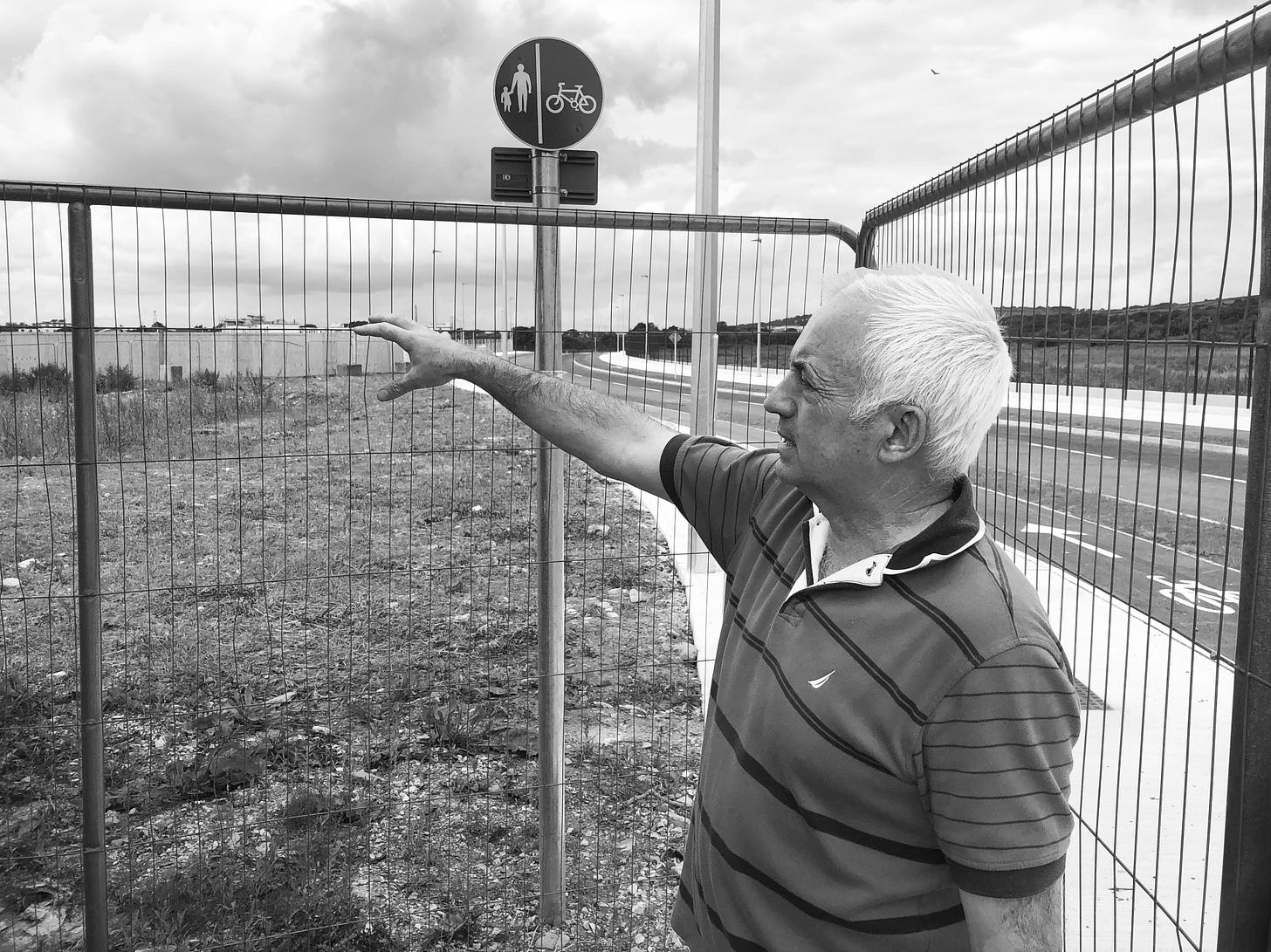
Tripe + Drisheen follow Anthony on a brief tour of Carrigtwohill, and there are plenty of signs of the type of community spirit he has described on display, from the community centre with people chatting outside to the stonework commemorating the site of the former village well.
We visit the site of the vast amalgamated three-school campus on the outskirts of the town, where work has just begun, and which will be home to 1,000 secondary school students and 24 classrooms for primary school children by 2024.
Carrigtwohill is a young town, and the school will be also in demand for neighbouring communities like Glounthaune, which doesn’t have enough school capacity and which is also set for a population boom.
“It’s a campus that will be full as soon as it opens,” Anthony says, posing for a photo on a ditch alongside the building site. “There’ll be some capacity, but it will basically be full.”
This huge campus, outside of the town centre, is served by a segregated cycleway and it’s also hoped that a Carrigtwohill West train station will reduce car dependency for students coming from Glounthaune.
Despite recent moves towards active travel, 89% of Carrigtwohill’s workers commute by car.
Anthony is chair of the County Council’s Environment Committee, but he says he’s being pragmatic when he says car dependency can only be reduced over time. “The car is going nowhere for the next 30 years,” he says. “All that environmental stuff – scrapping air travel, scrap cruise liners and the use of cars – it’s human nature that those things need to be done slowly. It’s not going to happen by flicking a switch over night.”
As ever, he’s back to the topic of delivering a variety of different resources and amenities for the area:
“The public realm will make a huge difference, all the physical infrastructure and cycleways. But cycleways alone don’t create a socially sustainable community; they give the potential to deliver it, but all the other pieces need to be put in place too.”
WOULD YOU LIKE TRIPE + DRISHEEN TO VISIT YOUR CORK COUNTY TOWN AND DO SOME REPORTING ON THE ISSUES FOR YOUR AREA? DROP US A LINE: OUR CONTACT EMAILS ARE HERE.





